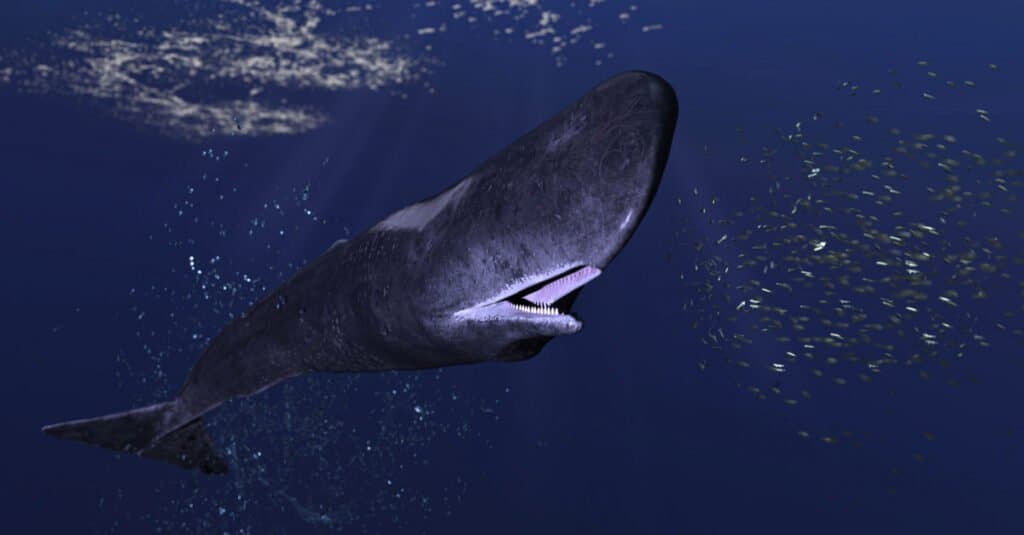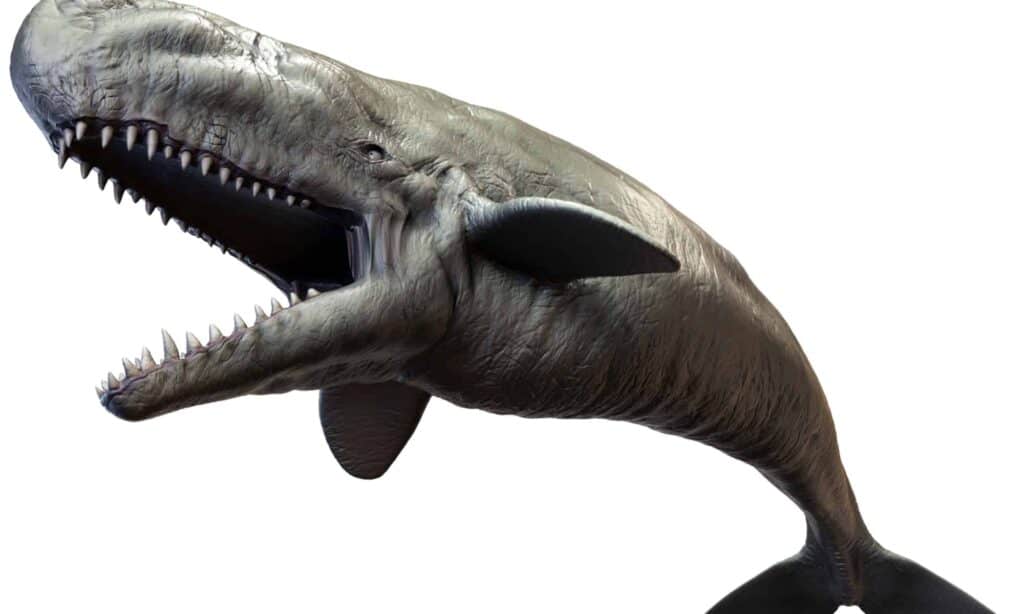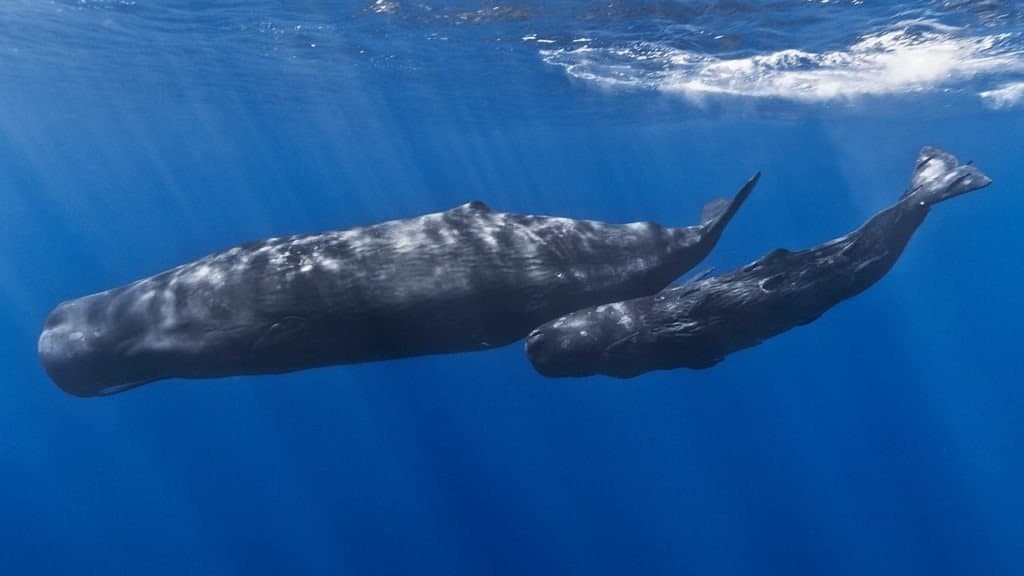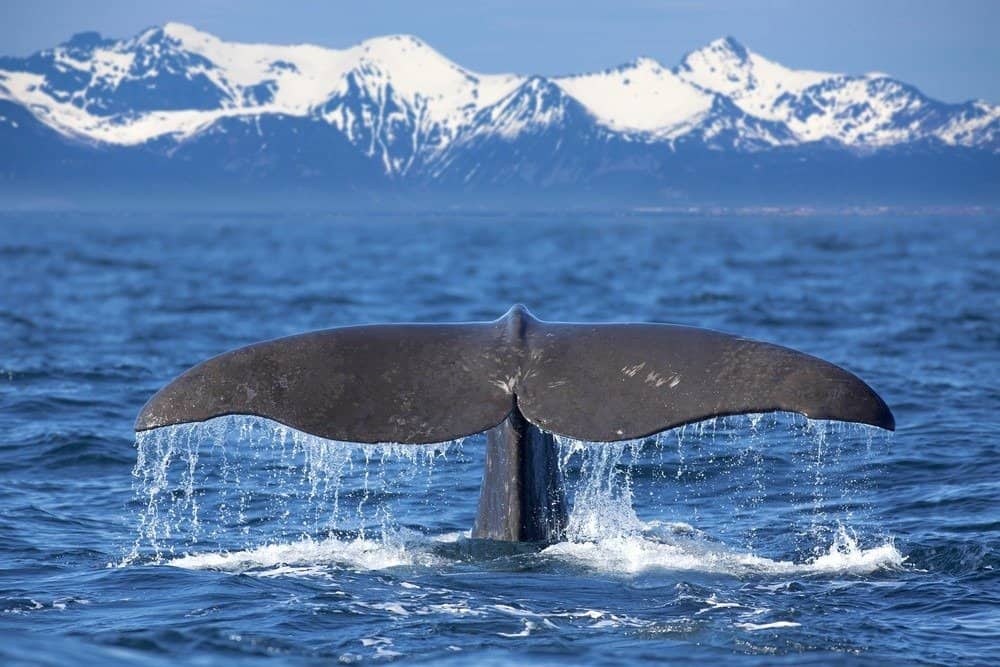For many years, scientists have examined the relationship between brain size and intelligence. Weight is the most used method of determining brain size; however, skull volume can also be used. There is a correlation between brain and body size, though this correlation does not hold for all cases. In this article, we reveal the largest animal brain on the planet. We also explore if the largest brain belongs to the largest animal. Are you ready?
The Largest Animal Brain on the Planet Belongs to…

The sperm whale has the largest animal brain on the planet.
©Martin Prochazkacz/Shutterstock.com
While humans have the smartest brains on the planet, the sperm whale has the largest brain on the planet! In fact, in comparison to a human brain, the sperm whale’s brain is more than five times heavier. Although many people think the elephant has the largest brain (it does for land-dwelling animals), the sperm whale has it beat by about eight pounds!
How Much Does the Sperm Whales Brain Weigh?

A sperm whale’s brain weighs up to 20 pounds.
©bekirevren/Shutterstock.com
An average sperm whale has a brain volume of 8,000 cubic millimeters and can weigh up to 20 pounds. The whale’s echolocation is said to be increased by its massive size. To search for food, whales rely on echolocation, a unique kind of communication. In order to communicate, whales produce high-frequency noises through their respiratory system. Knowing this, it’s easy to see why these giants can eat almost 2,000 pounds of food every day. They are much more adept at tracking down their food!
Is the Sperm Whale the Biggest Animal Since it has the Biggest Brain?
Surprisingly, the sperm whale is not the largest animal on the planet currently; that would be the blue whale. However, their brain sizes are quite different. For example, a blue whale weighs from 280,000 pounds to 330,000 pounds, and its brain size is usually no more than 15 pounds. A sperm whale at its most will weigh 90,000 lbs. and its brain weighs up to 20 pounds.
About the Sperm Whale

Sperm whales are large, toothed whales.
©Herschel Hoffmeyer/Shutterstock.com
The sperm whale is one of three whales that belongs to the Physeteroidea family. It is the last remaining whale that belongs to the Physeter genus. The sperm whale is also the largest toothed whale and the largest toothed predator on the planet! This whale has little to no predators due to its size. However, it is possible for a pod of orcas to attack a young sperm whale or an injured adult sperm whale.
Sperm Whale History
The sperm Whale was first identified back in 1598. They have always swum in deep oceans from the equator to the edge of the Arctic Sea. During the Early Miocene, much larger sperm whales with all of the traits of modern sperm whales existed (roughly 20 million years ago). Its discovery, however, was not the greatest for the species because it eventually generated multiple million-dollar enterprises surrounding its death. The sperm whale first received its name because of the spermaceti, a waxy material in a large organ. While the whaling industry was already on the rise when they were discovered, Sperm whales started being poached for this substance. It was used for creating oils, lamps, candles, pomades, lubricants, and more. Regrettably, the sperm whale has grown vulnerable in the wild.
Sperm Whale Size
Sperm whales can grow up to approximately 60 feet in length, making them one of the largest whales in the world. These whales can weigh as much as 15 short tons for females and as much as 45 short tons for adult males. Squid, fish and even sharks are common prey for whales due to their size and preference for deeper ocean conditions. Over 2,000 pounds of food is consumed each day by these enormous whales!
Reproduction

A mother sperm whale will raise her offspring for nearly 10 years.
When it comes to reproduction, it takes a female sperm whale anywhere from four to 20 years to mate. This makes more sense when you learn that the Sperm whale can live up to 70 years or longer. There is an average gestation period of 15 months, after which, the mother sperm whale will raise her offspring for nearly 10 years.
Are There Other Animals with a Comparable Brain Size?
While the sperm whale has the largest brain, there are other animals with brains close to their size. For example, an elephant has the largest brain of all land animals. Other species of whales also have large brains in comparison. A humpback whale, blue fail, fin whale, gray whale, and killer whale all have brains that range from eight pounds to 15 pounds.
Is the Sperm Whale the Smartest Since it has the Biggest Brain?
It is not always the case that a larger brain equals a smarter brain. The independent evolution of a species usually determines the intelligence of an animal. Aside from sperm whales and other creatures with bigger brains, it was formerly thought that primates had the most intelligent brains. This is due to their long evolutionary history. When attempting to ascertain this, scientists will assess the animal’s self-awareness, self-control, memory, and a host of other cognitive abilities. Because of this, humans are the most intelligent species, even though their brains only weigh 3 pounds!
In Conclusion

The survival of sperm whales is waning due to human activities.
©Kjersti Joergensen/Shutterstock.com
Although the sperm whale has the largest brain in the animal kingdom, this doesn’t mean it’s the smartest or safest animal out there. Although it doesn’t have many natural predators, humans are its biggest threat. When the whaling industry first began, studies show that the population of sperm whales specifically went from 1.1 million to around 800,000 after the 19th century. At least another 770,000 were taken from the 1940s to 1980s because of a rise in both the cosmetic and automobile industries.
Some countries, even though whaling is mostly banned, still participate. There’s also the matter of global warming, air pollution, and oil spills to think about. Even though there are thought to be roughly 300,000 sperm whales left in the world, their survival is still in jeopardy because of these threats. To help this glorious species thrive, you can recycle and take steps to reduce the effects of climate change.
The photo featured at the top of this post is © Life science/Shutterstock.com
Thank you for reading! Have some feedback for us? Contact the AZ Animals editorial team.







